Chinese Institute of Archaeology
Source - http://www.kaogu.cn/en/detail.asp?ProductID=3922
Wei Bridge is situated in the river beach of the southern Wei River in Weiyang District, Xian. The peasants discovered the site after excavated sand heavily in the area. Shaanxi Provincial Culture Heritage Bureau formed the Wei Bridge Archaeological Team with the aid from Shaanxi Provincial Institute of Archaeology, Institute of Archaeology, Chinese Academy of Social Sciences, the Xian Municipal Institute of the Preservation of Ancient Monuments and Archaeology to conduct subsequent archaeological works for the site.
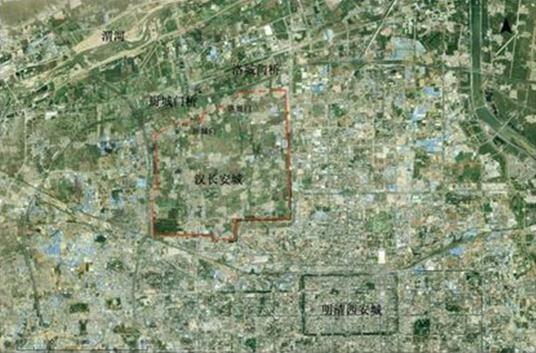
After extensive investigation and excavation, it is confirmed that at least five bridges separated in two sets were identified in the farmland of north Xixi village, Liucunbao Street, and in north Gaomiao village of Hancheng Street, Weiyang District respectively. The ancient bridge located in North Xixi village was also known as the “Chuchengmen bridge(CCMQ, Chucheng Gate Bridge)” as it was facing the Han Dynasty Chang’an City northern wall central gate. Four bridges were also identified and number according to their discovery sequence. The bridge located in the centre named CCMQ 1, CCMQ 2 was located 200m west to CCMQ 1. CCMQ4 was around 80m west to CCMQ 1 and CCMQ 3 was located 200m east to CCMQ 1. The ancient bridge located in the northern Gaomaio village was facing directly to the northern wall of Luocheng gate of Chang’an City in Han Dynasty, also known as “Luochengmen bridge (Luocheng Gate Bridge)”. Except CCMQ No.2, which cannot be excavated due to site constraint and the newly discovered CCMQ 4, archaeological works was proceeding in CCMQ1 and CCMQ3. Archaeological survey –cum-excavation for Luo City Gate Bridge was also conducted.
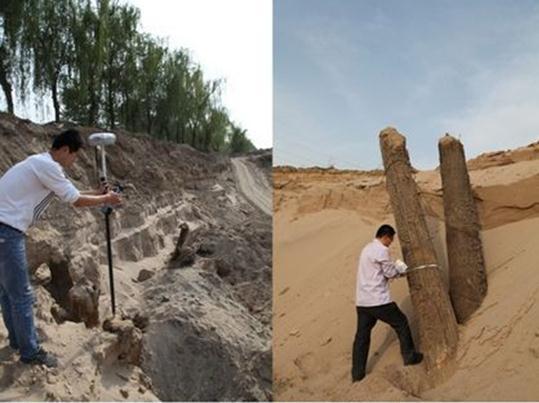
CCMQ 1
The CCMQ 1 is the wooden beam column bridge that was extended from north to south cut through the Wei River running from east to west. It is confirmed that the pile of the bridge is 15.4m in width measured from east to west and around 880m in length measured from north to south.
The broken length of the bridge pile measured around 6.2-8.8m long with 0.5-1.5m diameter. Most of the bridge pile was constructed with a log, which was cut into a triangular pyramid shape with at least 1m in length and inserted into the riverbed. The bridge pile was aligned from east to west in accordance with the flow of the river in different intervals. The distance between the two rows of the bridge pile was around 3 to 7m. According to the excavation, a large number of bridge piles in various sizes were identified in a group. Besides, the opening of some bridge pile was having a 2m different, which means the ancient bridge has been used, repaired and reconstructed extensively.
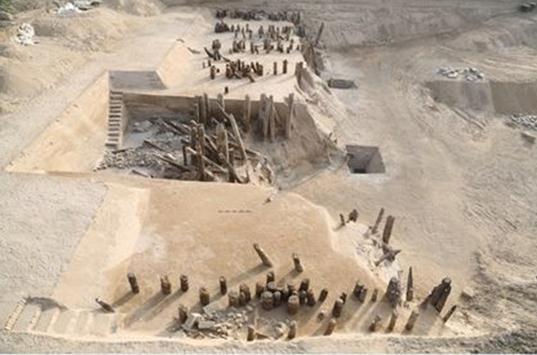
Large amount of blue stone, large sandstone building materials in rectangle, square, pentagon, trapezium, etc were identified. Engraved character or ink inscription were identified in various stone building materials in more than one place. The content is mainly about numbering and names of different people. Judging from the trace, the white lime and iron mortise were stick in between the pentagonal stone building materials.
In addition, large number of Banliang, Wuzhu and DaQuan Fifty bronze coin were discovered. Small amount of Kaiyuan Tongbao, Quianyuan Zhongbao, bronze coins from different emperor within the Song Dynasty, corded flat tile, tubular tile, eave tile fragment, grey brick, broken stele, etc were identified. In this connection, the bridge was built in Qin Dynasty and being used from Han, Tang and even Song Dynasties. The bridge was abandoned later for after its more than 1000 years usage.
After certification, the piles used for Bridge No.1 include phoebe zhennana, Chinese hemlock tree and Chinese Juniper.
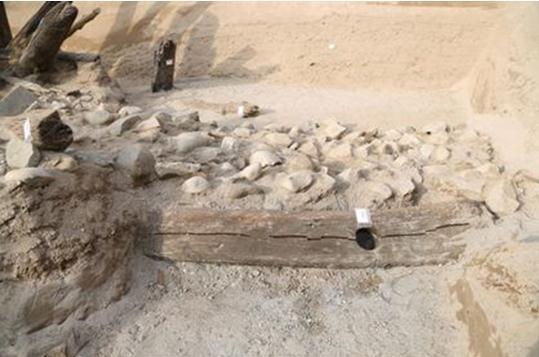
CCMQ 3
The excavated area of the No. 3 (CCMQ 3) Bridge was around 460 square meters where is away from CCMQ 1 about 200m.
The wooden beam column bridge was aligned from north to south and the two side piles measured 8.3m from east to west, two rows of piles were having a 6-7m interval from north to south.
A wriggling rope measured 12m in length and a 0.048m diameter was discovered in the sand of the northeastern portion within the excavation area. The west end of the rope was tied on top of a horizontal wooden beam. Copious amount of pebble were found around the bridge pile. It is believed that these pebbles were for protection purpose. As fragments of iron mortise were discovered in most cobbles, it is assumed that iron network was once in the vicinity of the bridge pile. The main usage of the iron is to protect the pebbles not being flooded by the river current.
Within the sand layer of the pebbles, corded tile, grey bricks, broken coarse casting mould for coin, pottery fragment, brown glazed porcelain and blue and white porcelain were identified.
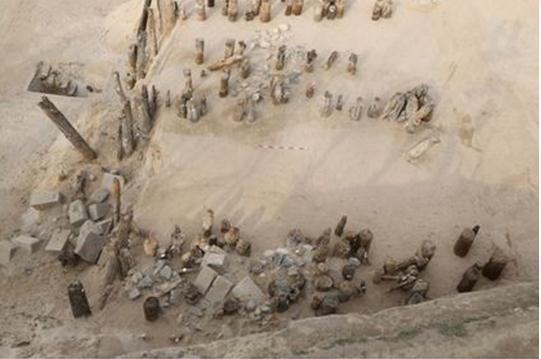
LCMQ
Excavation area of the Luocheng Gate Bridge (LCMQ) was around 400 square meters. The wooden beam column bridge was extended from north to south, measured 15m in width from the two wooden beams set aside from east to west. Three rows of pile were identified aligned from east to west attached with another two sets of pile with 9-10m in distance. Based on the relics and the bridge structure, the building period of the bridge is later than the CCMQ 1.
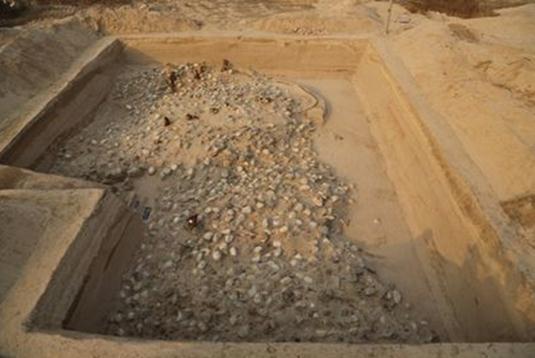
The 2012 new discovery of the Wei Bridge Site located at Xi’an northern countryside is a big scale excavation with complete and intact layout. The findings are rich and not only regarded as the largest wooden beam column bridge site from the Qin Dynasty, but also the world largest wooden beam column bridge during its period. Large amount of rectangular, pentagonal stone building structures were identified in CCMQ 1 together with other archaeological features. The bridge is a huge bridge combined with wood and stone, which is rarely seen. The bridge has a significant role in the Chinese ancient bridge history. (Translator: Li Langlin)